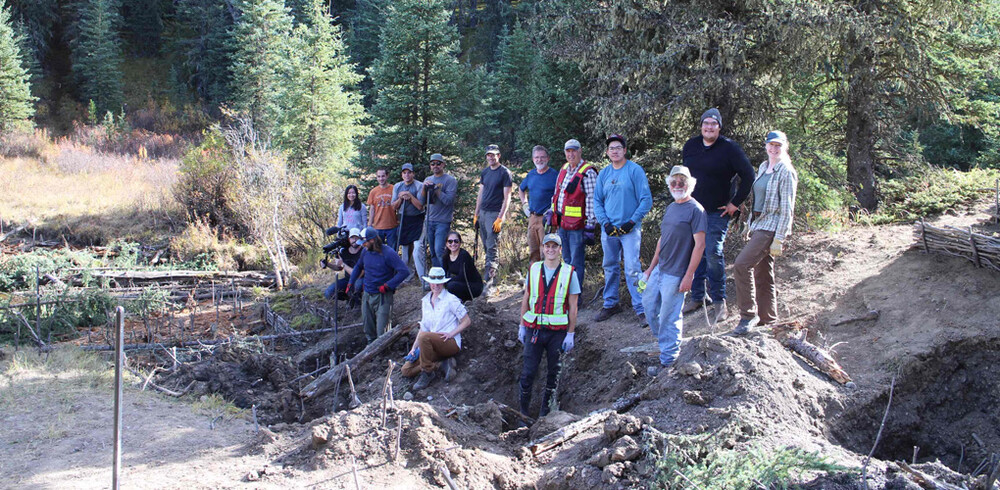Stewardship Showcase: Ghost Watershed Alliance Society

What Success in the Ghost Watershed Looks Like
Over the years, and especially since the pandemic began, the Ghost Watershed Alliance Society (GWAS) has observed an increase in the number of recreationalists and especially off highway vehicle (OHVs) users in the multi-use areas of the region. GWAS Executive Director, Marina Krainer lives in the area and sees firsthand the various ways OHV operators travel through the area.
“More and more, people are seeking out natural places to escape the urban commotion and due to the close proximity of the Ghost to heavily populated urban areas, this landscape is a go to” explains Marina.
“And while there are many that show respect for the land when they are here, there are also those who ride their OHVs off designated trails and through waterways.”
When this happens it breaks down shorelines, increasing sedimentation, altering environments and causing concern for and problems with sensitive fish habitat. The Ghost is home to some of the few remaining bull trout and westslope cutthroat trout populations in Alberta’s Eastern Slopes. But GWAS works hard to raise awareness, help address and repair these impacts.
Over the years, with funding from the Watershed Stewardship Grant and other sources, GWAS has been monitoring water quality, hosting bio-engineering workshops and sharing information on how to keep this important source watershed intact. In addition, GWAS is providing opportunities for recreational users of the area to get to know the Ghost Watershed through hikes, walks and hands-on outdoor educational events. The bio-engineering workshops in particular have provided opportunities for dozens of people from all walks of life including motorized recreational users to get outside and learn first-hand about watershed health, threatened native trout populations and their habitat as well as the importance of healthy riparian areas. Using simple techniques to re-establish native pioneering species such as willows and balsam poplar is the basic principle of bio-engineering, providing low-cost solutions to soil erosion problems.
At their most recent event, a two-day bio-engineering workshop led by seasoned plant ecologist Dave Polster this past September, attendees were able to put the restoration techniques they learned about during the classroom session to work in the field, restoring critical fish habitat along a tributary to Waiparous Creek in the Ghost Watershed.
“When it comes to protecting the watershed, ‘community’ is about more than just the people who live in the watershed or the GWAS members,” adds Marina.
“Creating a broader sense of community and connecting people, residents and visitors alike to the watershed through these activities enables them to see how they can make a difference. They get to appreciate how special and important source water areas such as the Ghost are, while helping to improve watershed resilience with every bio-engineering project they engage in.”

